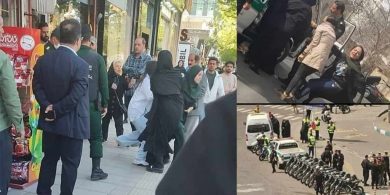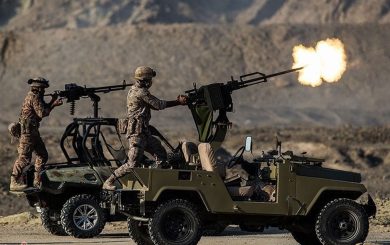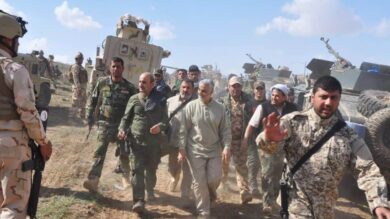Authoritarian regimes thrive on control—of speech, movement, information, and most powerfully, of gender. In the Islamic Republic of Iran, the regime’s most aggressive enforcer of that control is the Islamic Revolutionary Guard Corps (IRGC). Yet today, the most potent threat to its authority comes not from foreign intervention or economic sanctions—but from women. Iranian women have emerged as the most fearless force resisting repression, demanding equality, justice, and a voice in shaping the nation’s future.
This article explores how female leadership challenges the IRGC’s authoritarian rule, why women are seen as existential threats to regime stability, and how their resistance is transforming Iran’s political landscape.
1. The IRGC: Enforcer of Patriarchal Power
The Islamic Revolutionary Guard Corps (IRGC) was established in 1979 to protect the Islamic Republic’s ideology. Over time, it evolved into an elite military and intelligence force with massive economic power and unmatched influence across Iranian life. Central to its mission is the enforcement of the regime’s hardline interpretation of Islam—especially its control over women.
Through the Basij militia and intelligence arms, the IRGC plays a direct role in:
• Enforcing compulsory hijab laws.
• Crushing women-led protests.
• Imprisoning female activists, journalists, and lawyers.
• Censoring content that challenges the state’s gender norms.
For the IRGC, women’s bodies and voices are battlefields. Their visibility, agency, and leadership directly challenge the system’s foundational power structure.
2. Why Female Leadership is a Direct Threat
A. Subverting the Patriarchal Order
In Iran’s theocratic regime, male authority is the norm. From legal systems to public space, men dominate. Female leadership subverts this by:
• Occupying political, digital, and public spheres traditionally dominated by men.
• Refusing to comply with mandatory dress codes.
• Speaking truth to power through journalism, activism, and protest.
This visibility exposes the regime’s inherent fragility and hypocrisy, particularly in claiming to protect morality and “Islamic values.”
B. Mobilizing the Masses
Women are not only resisting individually—they are organizing collectively. They’ve led:
• The “White Wednesdays” movement against forced hijab.
• Nationwide protests following the death of Mahsa Amini.
• Global digital campaigns exposing IRGC violence.
These actions mobilize not just women, but men and youth as well, creating multi-generational movements the regime struggles to suppress.
3. Tools of Repression: The IRGC’s Response to Female Leadership
Authoritarian power fears what it cannot control. The IRGC responds to women’s leadership with:
• Surveillance: Monitoring female activists online and offline.
• Intimidation: Threatening families, careers, and futures.
• Imprisonment: Holding women in Evin and Qarchak prisons under brutal conditions.
• Sexual violence: Used during detention as a form of state-sanctioned torture.
• Defamation: Accusing women of “spreading corruption” or espionage.
These tactics are designed not just to silence individuals but to discourage broader female participation in dissent.
4. Stories of Courage: Women Challenging the IRGC
Narges Mohammadi
• Human rights activist and Nobel Peace Prize laureate.
• Continues to write and speak out from prison.
• Imprisoned repeatedly for exposing torture and demanding gender equality.
Nasrin Sotoudeh
• A lawyer who defends women arrested for protesting the hijab.
• Sentenced to decades in prison for “threatening national security.”
• A global symbol of legal resistance to patriarchal authoritarianism.
Masih Alinejad
• Journalist and digital activist in exile.
• Founder of #MyStealthyFreedom and #WhiteWednesdays.
• Target of an IRGC-backed kidnapping plot for exposing regime abuses.
These women, and many more unnamed, are reshaping Iran’s resistance from within and beyond its borders.
5. The Impact of Female-Led Resistance
A. Redefining National Identity
Female-led protests are redefining what it means to be Iranian:
• No longer bound by traditional, religious identity.
• Embracing plurality, diversity, and secular values.
• Making gender equality a central pillar of national pride.
B. Inspiring Global Solidarity
The “Women, Life, Freedom” movement has:
• Sparked solidarity protests worldwide.
• Pressured global governments to sanction IRGC leaders.
• Forced international media to center Iranian women’s stories.
This global stage empowers Iranian women and places pressure on the regime.
6. Why the IRGC Can’t Win
The IRGC may have weapons, prisons, and propaganda—but it doesn’t have legitimacy. Female leadership exposes:
• The regime’s inability to respond to democratic demands.
• The hypocrisy of morality laws.
• The failure of repression to erase agency.
Every time the IRGC arrests a woman for protesting, it creates another symbol of resistance. Every time it censors a voice, the message spreads farther. In the digital age, silence is impossible—and Iranian women know it.
7. What the World Must Do
To support female leadership and challenge authoritarian rule, the international community must:
• Sanction the IRGC as a terrorist organization (many countries already have).
• Demand the release of all political prisoners.
• Provide digital security tools for activists inside Iran.
• Amplify Iranian women’s voices in global media.
• Support diaspora-led campaigns that keep the movement alive abroad.
Conclusion: The Future Belongs to Women
Authoritarian regimes like Iran’s are built on fear, silence, and control. Female leadership breaks all three. Women’s bodies have become symbols of defiance; their voices, the anthem of a free Iran. The IRGC can deploy fear, but it cannot erase the vision Iranian women are building—a nation where freedom, equality, and dignity are not crimes.
Join Our Newsletter!
Stay informed with the latest updates, news, and ways to take action in the fight for justice and global security. Sign up now to get updates delivered straight to your inbox!





